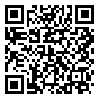BibTeX | RIS | EndNote | Medlars | ProCite | Reference Manager | RefWorks
Send citation to:
URL: http://journal.zums.ac.ir/article-1-2002-en.html
2- Dept. of Pediatrics, Kermanshah University of Medical Sciences, Kermanshah, Iran
3- School of Medicine, Kermanshah University of Medical Sciences, Kermanshah, Iran
Background and Objective: The survival rate of newborns not only depends on birth weight and gestational age, but also on other factors including physiological conditions and especially disease severity during the first hours of life. This study was designed to assess different variables and particularly the score for Neonatal Acute Physiology-II (SNAP-II), and their impact on the fate of the admitted neonates at the neonatal intensive care unit of Imam Reza Hospital in Kermanshah province of Iran. Materials and Methods: This descriptive analytical study was conducted on all newborns admitted to the Imam Reza Hospital NICU between October 2009 and March 2010. Demographic data, APGAR scores at minutes 1 and 5, referral center, previous hospitalization history, and the initial and final diagnosis were evaluated and recorded for each neonate. The SNAP-II scores, based on collected data within the first 12 hours of admission, were also calculated. All neonates were followed up until discharge or death. Data were analyzed by chi-square and independent t-test. Results: A total of 287 newborns were entered into the study. The neonatal mortality rate was 13.6% (39 neonates). There were significant correlations between the mortality rate and birth weight (P<0.0001), gestational age (P<0.003), APGAR scores in minutes 1 and 5, and SNAP-II score higher than 40 (P<0.0001). There were no statistically significant differences found between the mortality rate, sex, referral center, and previous hospitalization history. Conclusion: It seems that an SNAP-II score of more than 40 and the mean birth weight have the highest diagnostic value in predicting the mortality rate for the neonates. The APGAR scores in the first and fifth minutes of birth, and also the gestational age could be used as additional useful predictors for the mortality rate in neonates.
Received: 2012/12/25 | Accepted: 2014/06/21 | Published: 2014/06/21
| Rights and permissions | |
 |
This work is licensed under a Creative Commons Attribution-NonCommercial 4.0 International License. |




